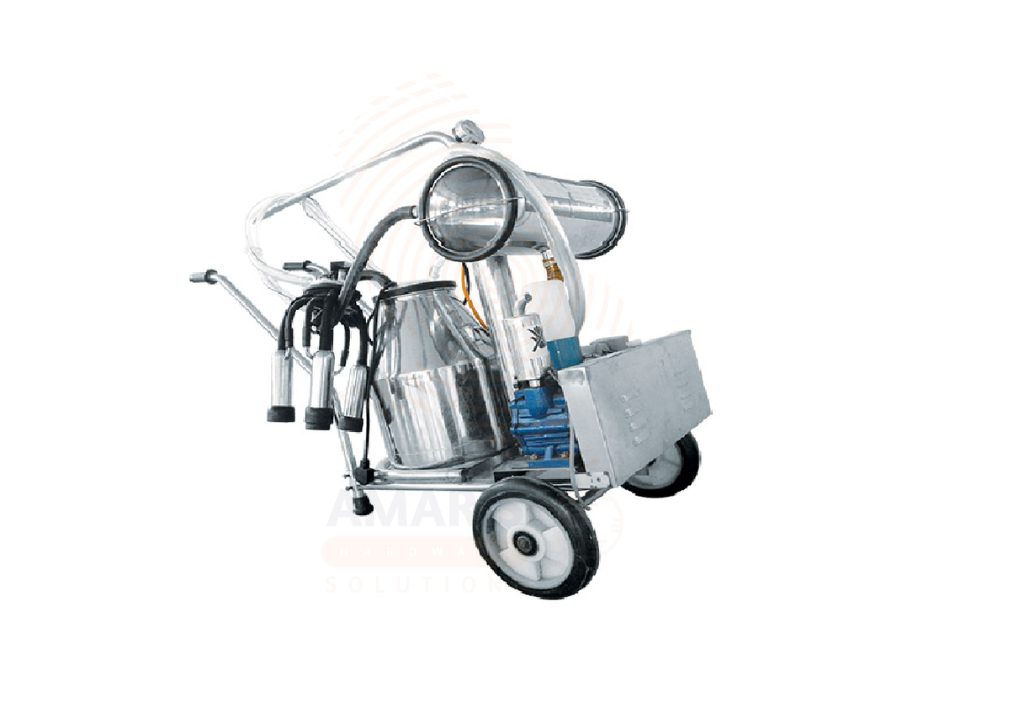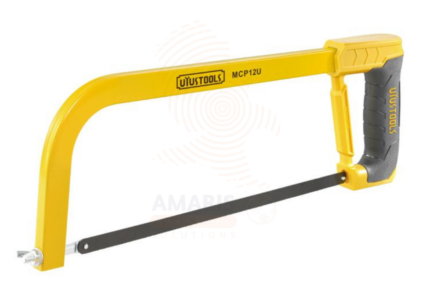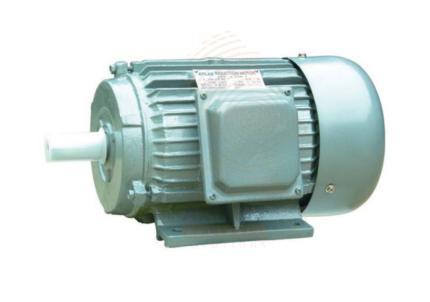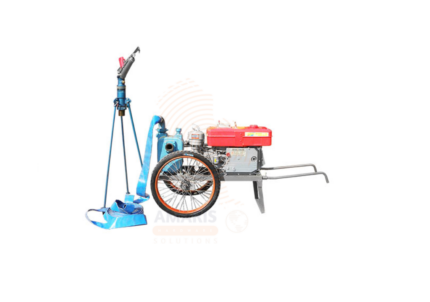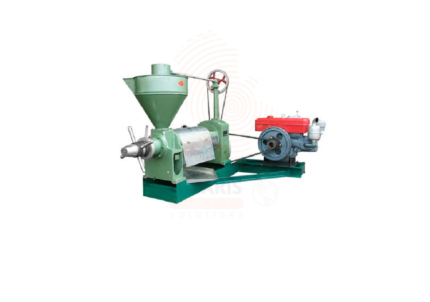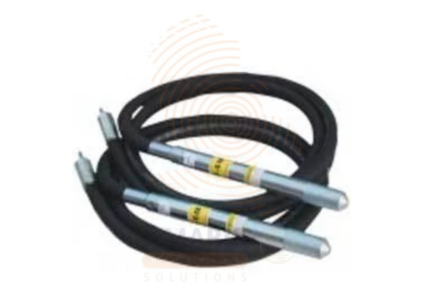Milking Machine
A Milking Machine is a mechanized system designed to extract milk from dairy animals such as cows, goats, and sheep in an efficient, hygienic, and consistent manner. It typically consists of a vacuum pump, pulsator, teat cups, milk container, and tubing system. The machine works by creating a vacuum that gently draws milk from the animal’s udder through the teat cups and collects it into a sealed container, minimizing contamination. Milking machines improve milking speed, reduce manual labor, and enhance udder health by maintaining a uniform milking routine. They are essential in dairy farming operations of all scales—from smallholder farms to large commercial dairies—where consistency and hygiene are critical for milk production.
Table of Contents
ToggleMilking Machine
Uses
-
Dairy Cow Milking
o Automates the process of extracting milk from cows, reducing labor and milking time.
o Ensures consistent milking pressure and hygiene. -
Goat and Sheep Milking
o Adapted versions are used for smaller animals, especially in specialty dairy operations.
o Provides gentle and efficient milking, reducing stress on the animal. -
Commercial Dairy Farms
o Speeds up large-scale milking operations with multi-animal systems.
o Integrated with milk storage and cooling systems for continuous workflow. -
Smallholder and Backyard Farming
o Portable models allow small-scale farmers to milk animals with ease.
o Reduces reliance on manual milking, especially for older or labor-constrained farmers. -
Milk Collection for Processing
o Ensures hygienic and sealed milk collection, ideal for pasteurization and dairy product processing.
o Reduces exposure to dust and airborne contaminants. -
Animal Health Monitoring
o Regular use helps detect changes in milk flow or udder condition, indicating potential mastitis or other health issues.
o Encourages scheduled, stress-free milking routines. -
Educational and Research Farms
o Used in training and veterinary programs to demonstrate modern dairy practices.
o Supports controlled experiments in livestock productivity and health. -
Mobile Dairy Units
o Deployed in remote areas or grazing fields for on-site milking.
o Maintains quality during off-grid or field operations. -
Improved Milk Yield and Quality
o Optimizes let-down reflex and minimizes milk residue, increasing total yield.
o Reduces chances of milk spoilage due to quicker and cleaner collection.
Safety Precautions
-
Maintain Proper Hygiene
o Clean and sterilize all teat cups, tubing, and containers before and after each use.
o Wash the animal’s udder thoroughly to avoid contamination. -
Inspect Equipment Regularly
o Check hoses, gaskets, and valves for cracks, leaks, or buildup.
o Replace worn parts promptly to ensure consistent suction and safety. -
Use the Right Machine for the Animal
o Ensure the machine is suited to the animal’s size and teat spacing.
o Using incorrect models can cause teat injury or stress. -
Monitor Vacuum Pressure
o Set and monitor proper vacuum levels to prevent udder damage.
o Avoid sudden pressure changes during milking. -
Handle Animals Gently
o Secure the animal in a calm, clean area before starting.
o Avoid loud noises or sudden movements that may startle them. -
Prevent Electrical Hazards
o Use machines with grounded plugs and keep electrical components away from wet areas.
o Never operate electric models in standing water. -
Train Operators
o Ensure all users are trained in correct operation and cleaning procedures.
o Understand emergency shut-off functions. -
Do Not Overmilk
o Stop the machine as soon as milk flow ceases to avoid teat end damage.
o Use automatic shutoff features if available. -
Store and Transport Safely
o Keep equipment dry and protected from rodents or pests.
o Use covers or sealed containers for hygiene when storing or moving equipment.


 Acrylic Sealants
Acrylic Sealants Construction Adhesives
Construction Adhesives Double-Sided Tape
Double-Sided Tape Duct Tape
Duct Tape Electrical Tape
Electrical Tape Epoxy & Resins
Epoxy & Resins Masking Tape
Masking Tape
 Automotive Wrenches & Socket Sets
Automotive Wrenches & Socket Sets Battery Chargers & Jump Starters
Battery Chargers & Jump Starters Car Jacks & Stands
Car Jacks & Stands Car Wash & Detailing Products
Car Wash & Detailing Products Diagnostic Tools
Diagnostic Tools Tire Inflators
Tire Inflators Vehicle Lighting
Vehicle Lighting Oil & Lubricants
Oil & Lubricants
 Adhesives & Sealants
Adhesives & Sealants Bricks & Blocks
Bricks & Blocks Cement & Concrete
Cement & Concrete Drywall & Plaster
Drywall & Plaster Flooring (Tiles, Wood, Laminate)
Flooring (Tiles, Wood, Laminate) Lumber & Plywood
Lumber & Plywood Paints, Primers & Coatings
Paints, Primers & Coatings Insulation Materials
Insulation Materials Roofing Materials
Roofing Materials
 Circuit Breakers
Circuit Breakers Electrical Cables & Wires
Electrical Cables & Wires Switches & Sockets
Switches & Sockets Fuses & Relays
Fuses & Relays Connectors & Terminals
Connectors & Terminals Electrical Boxes & Panels
Electrical Boxes & Panels Conduit & Fittings
Conduit & Fittings Lighting Fixtures & Bulbs
Lighting Fixtures & Bulbs Extension Cords & Power Strips
Extension Cords & Power Strips
 Anchors
Anchors Bolts
Bolts Clips & Clamps
Clips & Clamps Screws
Screws Nuts
Nuts Washers
Washers Rivets
Rivets Nails
Nails Threaded Rods
Threaded Rods
 Hammers
Hammers Measuring Tools (Tapes, Levels, Calipers)
Measuring Tools (Tapes, Levels, Calipers) Screwdrivers
Screwdrivers Pliers & Cutters
Pliers & Cutters Saws & Blades
Saws & Blades Chisels & Punches
Chisels & Punches Allen Keys & Hex Keys
Allen Keys & Hex Keys Ratchets & Socket Sets
Ratchets & Socket Sets Wrenches & Spanners
Wrenches & Spanners
 Power Tool Accessories (Blades, Bits, Discs)
Power Tool Accessories (Blades, Bits, Discs) Rotary Tools
Rotary Tools Saws (Circular, Jigsaw, Reciprocating)
Saws (Circular, Jigsaw, Reciprocating) Drills & Drivers
Drills & Drivers Grinders & Sanders
Grinders & Sanders Heat Guns
Heat Guns Nail Guns
Nail Guns Impact Wrenches
Impact Wrenches Batteries & Chargers
Batteries & Chargers
 Pipes & Fittings (PVC, Copper, PEX)
Pipes & Fittings (PVC, Copper, PEX) Plumbing Tools
Plumbing Tools Pumps & Motors
Pumps & Motors Sealants & Adhesives for Plumbing
Sealants & Adhesives for Plumbing Valves & Taps
Valves & Taps Water Heaters
Water Heaters Drainage Systems
Drainage Systems Faucets & Fixtures
Faucets & Fixtures Hoses & Tubing
Hoses & Tubing
 Hinges & Latches
Hinges & Latches Hooks & Brackets
Hooks & Brackets Window Hardware
Window Hardware Chains & Cables
Chains & Cables Casters & Wheels
Casters & Wheels Shelving & Storage Systems
Shelving & Storage Systems Door Handles & Locks
Door Handles & Locks Drawer Slides & Cabinet Hardware
Drawer Slides & Cabinet Hardware
 Personal Protective Equipment (PPE)
Personal Protective Equipment (PPE) Respirators & Masks
Respirators & Masks Safety Glasses
Safety Glasses Safes
Safes Security Cameras
Security Cameras Gloves
Gloves Helmets
Helmets Ear Protection
Ear Protection Fire Safety Equipment
Fire Safety Equipment Locks & Padlocks
Locks & Padlocks Motion Sensors & Alarms
Motion Sensors & Alarms
 Garden Fencing
Garden Fencing Garden Furniture Hardware
Garden Furniture Hardware Lawn Mowers
Lawn Mowers Trimmers & Edgers
Trimmers & Edgers Shovels & Spades
Shovels & Spades Rakes & Hoes
Rakes & Hoes Pruning Shears & Loppers
Pruning Shears & Loppers Watering Systems (Hoses, Sprinklers, Nozzles)
Watering Systems (Hoses, Sprinklers, Nozzles)
 Interior Paints
Interior Paints Paint Brushes & Rollers
Paint Brushes & Rollers Paint Strippers & Thinners
Paint Strippers & Thinners Paint Trays & Accessories
Paint Trays & Accessories Exterior Paints
Exterior Paints Spray Paints
Spray Paints Primers & Undercoats
Primers & Undercoats Varnishes & Stains
Varnishes & Stains
 Gaskets & Seals
Gaskets & Seals Hydraulic Fittings
Hydraulic Fittings Industrial Fasteners
Industrial Fasteners Industrial Hoses
Industrial Hoses Lubricants & Greases
Lubricants & Greases Metal Sheets & Bars
Metal Sheets & Bars Bearings & Bushings
Bearings & Bushings Belts & Pulleys
Belts & Pulleys
 HVAC Filters
HVAC Filters Insulation for HVAC
Insulation for HVAC Air Conditioners
Air Conditioners Refrigerants
Refrigerants Ventilation Ducts & Fittings
Ventilation Ducts & Fittings Thermostats & Controllers
Thermostats & Controllers Fans & Blowers
Fans & Blowers
 Pegboards & Hooks
Pegboards & Hooks Shelving Units
Shelving Units Storage Bins & Containers
Storage Bins & Containers Toolboxes & Tool Chests
Toolboxes & Tool Chests Workbenches
Workbenches Drawer Organizers
Drawer Organizers Labeling Supplies
Labeling Supplies
 Welding Accessories (Clamps, Brushes)
Welding Accessories (Clamps, Brushes) Welding Electrodes & Rods
Welding Electrodes & Rods Welding Helmets & Gloves
Welding Helmets & Gloves Welding Machines
Welding Machines Soldering Irons & Stations
Soldering Irons & Stations Flux & Solder Wire
Flux & Solder Wire
 Generator Accessories
Generator Accessories Inverters
Inverters Portable Generators
Portable Generators Power Inverters
Power Inverters Transfer Switches
Transfer Switches Diesel & Gasoline Generators
Diesel & Gasoline Generators
 Transport Equipment: Carts, Dollies, and Hand Trucks
Transport Equipment: Carts, Dollies, and Hand Trucks Storage Solutions: Pallets, Racks, and Containers
Storage Solutions: Pallets, Racks, and Containers Lifting Equipment: Hoists, Cranes, and Jacks
Lifting Equipment: Hoists, Cranes, and Jacks Conveyors and Accessories: Belts and Rollers
Conveyors and Accessories: Belts and Rollers